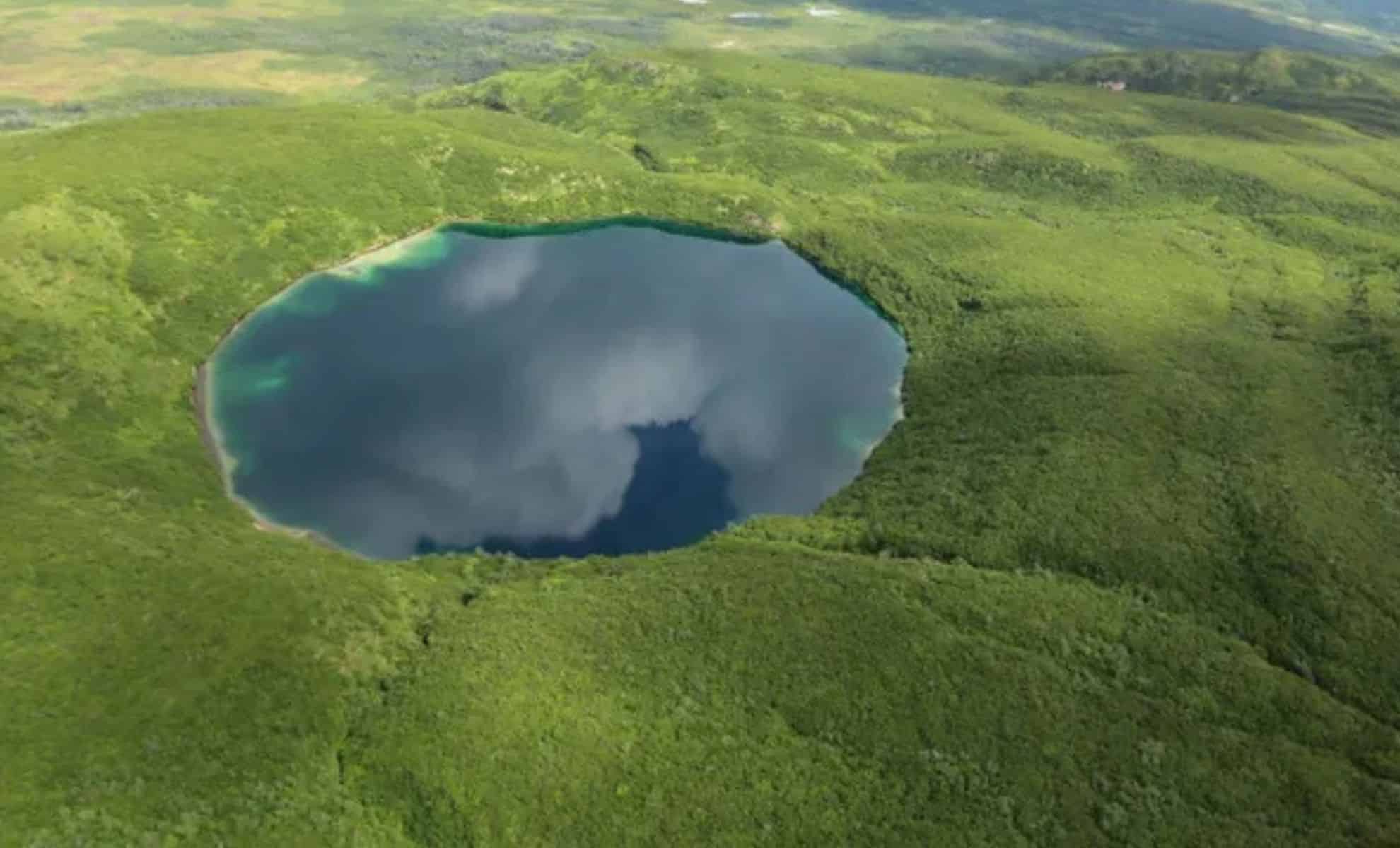
Nestled within the stunning Katmai National Park in Alaska, the Savonoski Crater is a remarkable geological feature that has baffled scientists for many years. Spanning a massive 1,600 feet in diameter, this perfectly round crater appears to be the result of a significant impact or explosion. Despite its impressive dimensions and distinct shape, the exact origins of this crater remain a mystery, leaving researchers with more questions than answers.
Upon first inspection, the Savonoski Crater resembles a typical impact crater from a meteorite, with its sleek circular form and steeply sloped walls. However, there is a notable absence of any meteoritic debris or the remnants of a space rock at the site, which raises doubts. Alternative theories propose that it might be a volcanic maar—a type of crater formed when magma interacts with groundwater, leading to a steam explosion. However, this hypothesis is complicated by the lack of known volcanic activity in the vicinity.
This ongoing geological conundrum has prompted extensive investigations, yet the Savonoski Crater continues to elude definitive explanation, positioning it as one of Alaska’s most intriguing geological mysteries.
Investigating the Geological Puzzle
Geologists have had their eyes on the Savonoski Crater for quite some time, but thorough geological surveys conducted during the 1960s and 1970s provided no clear evidence regarding its formation. The most comprehensive analysis of the crater’s origins was documented in an article by the University of Alaska Fairbanks back in 1978. This study scrutinized various hypotheses but could not definitively ascertain whether the crater resulted from an impact from outer space or internal volcanic activity.
Initially, geologists deemed it a meteorite impact crater, given its characteristics align with those seen in other impact sites. However, despite extensive research, no signs of meteoritic materials or shocked rocks—which typically accompany impact events—were found. Additionally, there were no indications of ejected debris, which usually signifies a significant meteor strike.
Once the meteorite impact theory was dismissed, scientists explored the volcanic maar hypothesis. Volcanic maars develop when magma rises to meet groundwater, resulting in a steam-driven explosion that produces a large crater. For example, the Ukinrek Maars—located just over 100 miles away—were formed during a prolonged volcanic eruption in 1977.
However, despite the crater’s superficial similarity to volcanic maars, there is no evidence suggesting a magma source beneath Savonoski Crater. Surveys from the 1970s failed to reveal any volcanic vents or signs of underground activity, leaving the origins of Savonoski Crater shrouded in uncertainty.


Glacial Activity: A Barrier to Discovery
A significant challenge in uncovering the secrets of the Savonoski Crater lies in the geological history that has been largely obliterated by glacial activity. Researchers believe the region underwent a significant glaciation event between 23,000 and 14,700 years ago, during which extensive ice sheets blanketed southwestern Alaska. Such glaciers may have erased crucial geological markers, masking any signs of an impact or volcanic event.
If this theory holds true, it would account for the absence of the typical geological indications one would expect from either impact craters or volcanic maars. However, some scientists argue that essential clues may still reside beneath the surface. Core drilling at the crater’s center could unveil hidden geological layers that offer insights into its formation.
The Ongoing Enigma of Savonoski Crater
Decades of inquiry have yet to demystify the Savonoski Crater. While many researchers postulate that the crater likely resulted from either a meteorite strike or a volcanic eruption, the lack of conclusive geological evidence prevents any firm conclusions. Moreover, the possibility of an entirely unknown geological phenomenon contributing to its creation cannot be dismissed, adding to the allure surrounding this mysterious formation.
As advancements in deep-core drilling and imaging technologies emerge, there may finally be a chance to unveil the origins of Savonoski Crater. Until such breakthroughs occur, this remarkable and enigmatic crater will continue to be one of Earth’s most fascinating geological mysteries—serving as a silent testament to the secrets our planet conceals.









